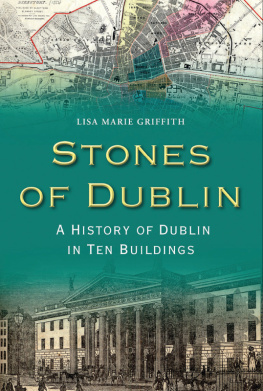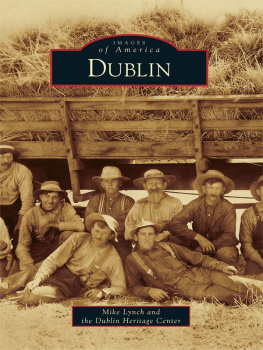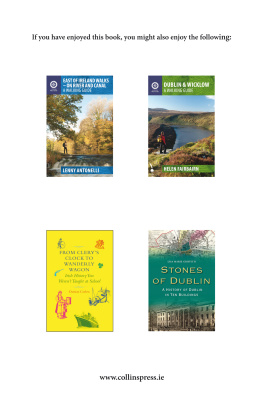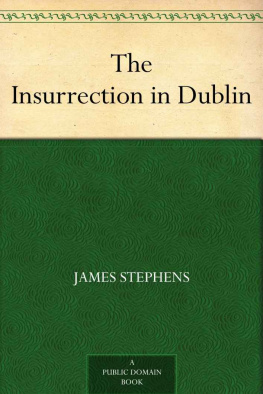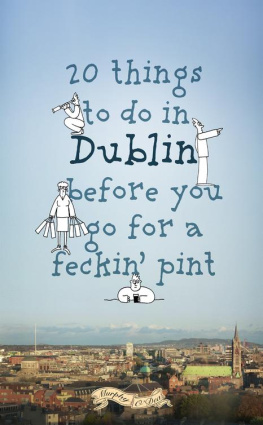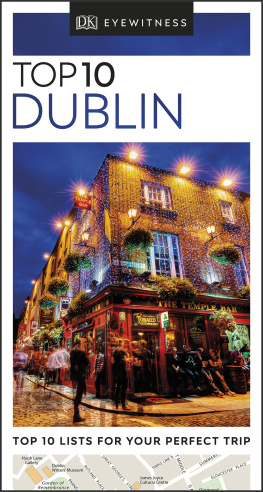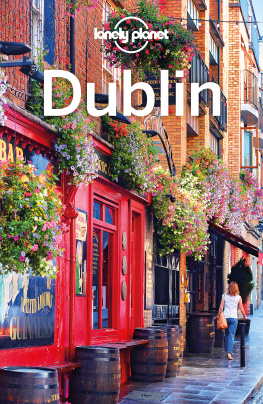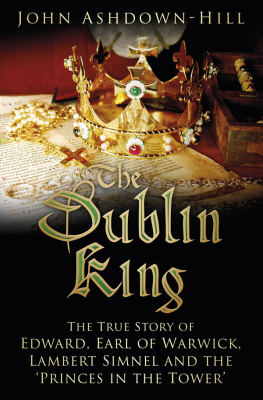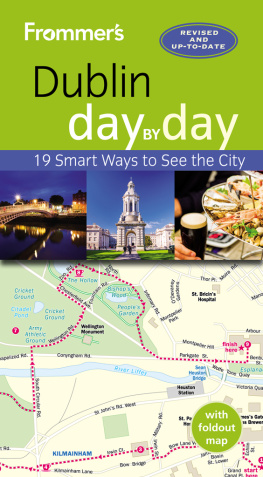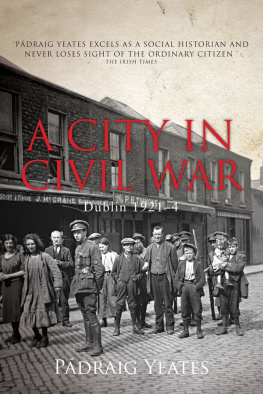A GREAT NUMBER of people were prepared to give their time and energy to assist me with this book and I would like to take this opportunity to thank them. The publishers were hugely supportive of this project. They helped to develop the original idea and guide me from a list of 24 buildings to just ten.
Ciarn Wallace of Trinity College, Dublin was kind enough to provide advice, support and to recommend material for inclusion. He also gave up a large amount of time to read a draft of the book. A number of historians have provided me with assistance but I would like to single out a number of people in particular. I am very grateful to Dr Juliana Adelman (St Patricks College, DCU), Eamon Darcy (NUI Maynooth), Suzanne Forbes (UCD and National Print Museum) and Lan N Chlirigh (Trinity College, Dublin) who volunteered their historical expertise and provided advice on buildings and sources.
Andrew Staunton, from St Patricks Cathedral, was kind enough to meet with me and provide advice about Christ Church and St Patricks Cathedral. Donal Fallon, from Come Here to Me ( http://comeheretome.com/ ), provided information on the Guinness cartoon featured within.
We are blessed in Dublin to have a fantastic network of local libraries and archives. I would like to thank the staff at Dublin City Library and Archive at Pearse Street, and Rathmines Public Library for all of their assistance. Dublin history would be a very limited field without access to these repositories that provide not only wide-ranging sources but also the most up-to-date studies.
I was lucky enough to work as a tour guide for several years at Historical Insights, one of Dublins best tour-guiding companies. During my time working for the company, I learnt a huge amount about the citys architecture, streetscape and history. Without the training provided by Tommy Graham and Peter Ballagh, as well as the rest of the team at Historical Insights, I could not have written this book.
I would also like to thank my colleagues and students at the National Print Museum for their patience and support while preparing this book including Carla Marrinan, Suzanne Forbes, Gretta Halpin, Mary Tobin and Conrad Devlin. Emma Arbuthnot, who has since left the museum, also provided assistance.
I had a huge amount of assistance selecting and gathering images. A number of repositories, archives and institutions, allowed me to reproduce images from their collection and I would like to thank them. They include Dublin City Library and Archives (DCLA), the National Library of Ireland (NLI), Guinness Archive, Hugh Lane Gallery, Irish Architectural Archive (IAA), Kilmainham Gaol, UCD Digital Archive, St Patricks Cathedral and TARA Digital Repository (Trinity College Dublin). Niall Bergin (Kilmainham Gaol), Eithne Massey (DCLA) and Andrew Staunton (St Patricks Cathedral) provided great assistance and helped me to find suitable images for the text. Some people were king enough to give me permission to use their own work, or images for which they hold the copyright, including Ciarn MacGonigal and Roger Stalley.
I would also like to thank those who helped me to complete and polish the book. John Gibney provided advice on the text and did a wonderful job copy-editing the work. Josette Prichard set the text and was extremely patient with the many last-minute changes made.
My family have provided enormous support while I researched and wrote this book. Thanks to my parents, John and Christine, also Sinead and Conor Pyne, Darren and Julie Griffith, and Jonathan Griffith. My friends have supplied very welcome breaks from the researching and writing process. Thanks to Denise Dwyer, Sinead Kelly, Margaret and Kenny Lynch, Nicholas Kelly and Michelle Behan. Finally, I could not have written this book without the support I received from boyfriend Ciaran Murray, who read chapters, gave feedback and provided encouragement.

